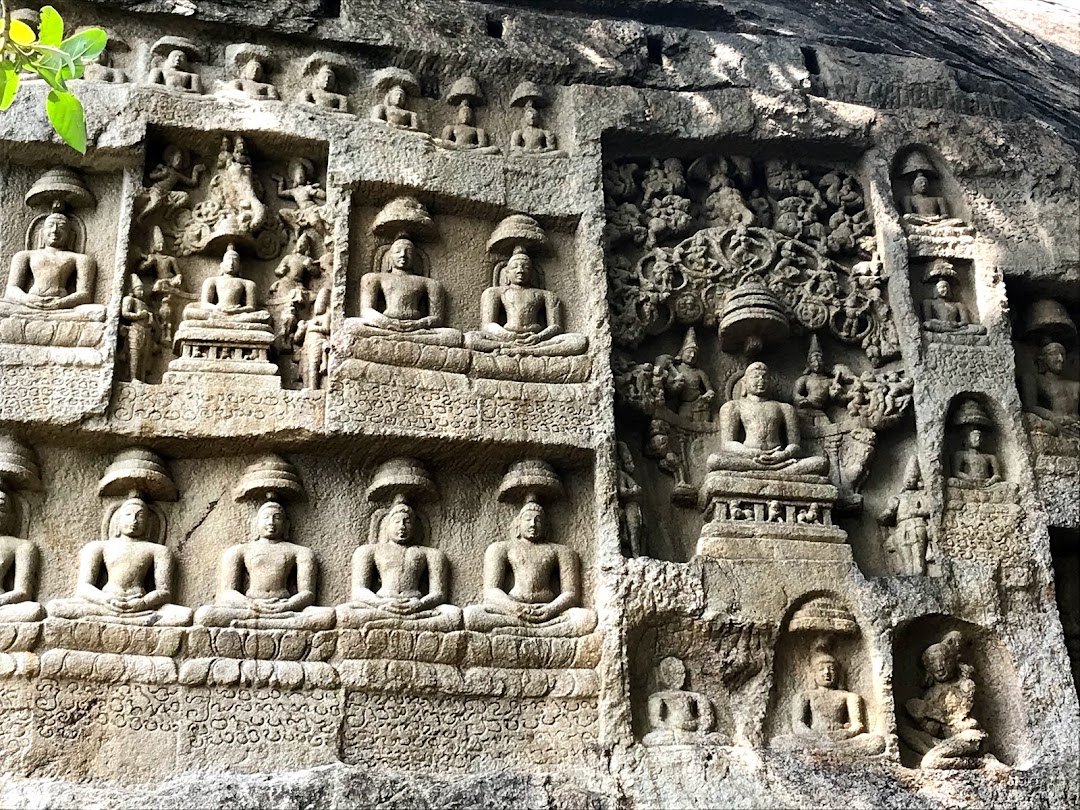Heritage Preservation

Tamlinadu
Tamilnadu has huge history of Jainism. Early Tamil-Brahmi inscriptions in Tamil Nadu dated to the 3rd century BCE and describe the livelihoods of Tamil Jains. The oldest known Tamil kings were recorded to follow the Jain religion which makes Jainism, the second oldest religion in Tamil Nadu. Inscriptions dating back to 8th century CE were found in Tiruchirappalli narrating the presence of Jain monks in the region.The Kalabhra dynasty, who were patrons of Jainism, ruled over the entire ancient Tamil country in the 3rd–7th century CE. Pallavas followed Hinduism but also patronized Jainism. The Trilokyanatha Temple in Kanchipuram and Chitharal Jain Temple were built during the reign of the Pallava dynasty.
The Pandyan kings were initially Jains but later became Shaivaites. Strabo states that an Indian king called Pandion sent Augustus “presents and gifts of honour”. The Sittanavasal Cave and Samanar Malai are Jain complexes that were built during the reign of Pandyan dynasty.The Cholas patronized Hinduism, however, Jainism also flourished during their rule.The construction of Tirumalai cave complex was commissioned Queen Kundavai, elder sister of Rajaraja Chola I. The Tirumalai cave complex consists of 3 Jain caves, 2 Jain temples and a 16 metres (52 ft) high sculpture of Tirthankara Neminatha which is the tallest idol of Neminatha and the largest Jain idol in Tamil Nadu. The Digambara Jain Temple in Thirakoil and the Mallinathaswamy Jain Temple in Mannargudi were both built during the reign of the Chola dynasty.
Looking at history of Jainism it is equal important to protect heritage temples and s
Sites. As many of the sites are interior from main road it was difficult to reach temples. Jain Sangh Pune(JSP) volunteers under guidance of Mr Madhur Jain and Madurai Jain Heritage Center visited all this places and found that Sign Boards are important to reach Temples which carries history of Jainism from this point JSP started installing sign boards along with main roads and internal roads from year 2015. Till now installation of 650+ sign boards and grill work at one location to save from encroachment is completed.
Using sign boards while travelling anyone whoever is travelling in tamlinadu can easily reach to temple which is history on its own. Grill work, preservation, safe guarding and sign boards work is still in progress
Maharashtra
Jainism in Maharashtra has a long history. The oldest inscription in Maharashtra is a 2nd-century BC Jain inscription in a cave near Pale village in the Pune District. It was written in the Jain Prakrit and includes the Navkar Mantra. The first Marathi inscription known is at Shravanabelagola, Karnataka near the left foot of the statue of Bahubali, dated 981 CE.
Maharashtra was ruled by many Jain rulers such as the Rashtrakuta dynasty and the Shilaharas. Many of forts were built by kings from these dynasties and thus Jain temples or their remains are found in them. Texts such as the Shankardigvijaya and Shivlilamruta suggest that a large number of Marathi people followed jainism in the ancient period.Jain Sangh Pune(JSP) along with volunteers visited Aenapur (Ibramhimpur) and found that ancient temple probably from 12 or 13th century stone’s structure drew our attention, plants were peeping from the cracks of the stone walls when volunteers went inside premises beautiful idol was installed. Stones and structure are just waiting for this season’s rain to get totally destroyed, because stones are just lying one above another in such a badly manner, a single rain can seal this temple’s fate and our heart almost cried by looking the condition of temple. JSP took initiative to help to preserve heritage by renovating temple with all required details and completed temple renovation with panch kalyanak
